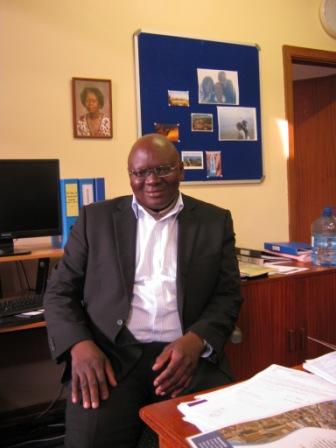
The international symposium will bring together experts and students from China, the USA, Italy, Israel, Poland and South Africa to “explore contemporary, up-to-date theories of luminescence in quartz, attempting to resolve the disparities between the different major theories” and it will be held at the Courtyard Hotel in Port Elizabeth from 1 to 6 July.
Head of Department of Physics and Electronics, Prof Makaiko Chithambo has organised an international symposium concentrating on luminescence. The symposium is the third of series, the first of which was held in Bern, Switzerland in 2007 and the second in Port Elizabeth in 2008.
“We hold these specialised symposiums when we feel there is a topic or field of interest that we can freely discuss and focus on,” he says.
He expects the group of experts to “debate and argue these different findings and approach the subject from different angles,” finding answers or map out which experiments must still be carried out in order to find solutions.
Emphasising the importance of students being present at the symposium, Prof Chithambo is the chair of the local organising committee and will also serve as the conference chair- responsible for organising travel arrangements, accommodation and logistics, as well as putting together the scientific advisory committee.
He says the idea for the symposium came about when he visited the USA in November 2011, where he met with Dr Vasilis Pagonis, professor of physics and chairman of the physics department at McDaniel College.
During an informal discussion over a cup of coffee, the two colleagues decided that, instead of seeking solutions themselves, to instead grant an opportunity for researchers and students of luminescence to discuss their findings, challenges and find solutions. Prof Pagonis is now a member of the scientific advisory committee along with colleagues from Tel Aviv and Milan.
The research group will focus on the study of defects in solid materials such as synthetic and natural quartz and aluminium oxide, which exhibits an excellent response to luminescent stimulation. In short, luminescence utilises information from electrons trapped at the defective sites or areas within solid materials.
This charged movement is used to ascertain how much radiation a person or object, such as food, has been exposed to, as the number of trapped electrons is directly linked to the level of radiation. Incidentally, the irradiation of foodstuffs, which is used as preservation and to kill bacteria, is completely safe for humans.
This irradiation ionises the material producing free electrons which attach themselves to defective sites. By exposing the material to heat (300-400 degrees) or light of a specific wavelength, the trapped electrons absorb the energy around them. This causes them to unattach themselves from the defective sites and shed the extra energy, rendering them unstable. They then move to a low-energy state by shedding the energy through light or luminescence.
Because there are different explanations of what exactly takes place at the defective sites, the delegates will attempt to examine and resolve at the disparities between models.
Funded by the National Research Foundation, the symposium has also received supplementary funding from Rhodes University, which is partly why it has been possible for students to also attend, ensuring a specialised learning experience for all scholars of luminescence.
Story and photo by Anna-Karien Otto
